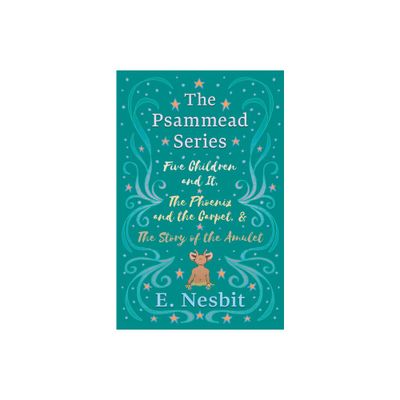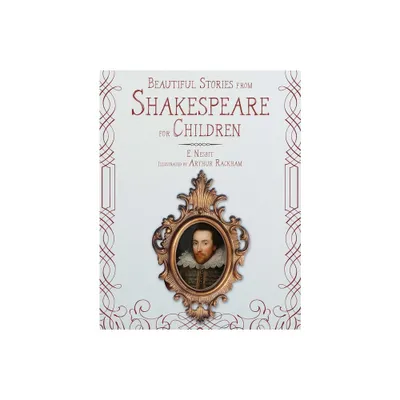Home
Harding's Luck (1909). By: E. Nesbit, illustrated By: H. R. Millar (1869 - 1942): The second (and last) story in the Time-travel/Fantasy "House of Arden" series for children.
Loading Inventory...
Barnes and Noble
Harding's Luck (1909). By: E. Nesbit, illustrated By: H. R. Millar (1869 - 1942): The second (and last) story in the Time-travel/Fantasy "House of Arden" series for children.
Current price: $9.88


Barnes and Noble
Harding's Luck (1909). By: E. Nesbit, illustrated By: H. R. Millar (1869 - 1942): The second (and last) story in the Time-travel/Fantasy "House of Arden" series for children.
Current price: $9.88
Loading Inventory...
Size: OS
*Product Information may vary - to confirm product availability, pricing, and additional information please contact Barnes and Noble
Edith Nesbit (married name Edith Bland; 15 August 1858 - 4 May 1924) was an English author and poet; she published her books for children under the name of E. Nesbit. She wrote or collaborated on more than 60 books of children's literature. She was also a political activist and co-founded the Fabian Society, a socialist organisation later affiliated to the Labour Party. Nesbit was born in 1858 at 38 Lower Kennington Lane in Kennington, Surrey (now part of Greater London), the daughter of an agricultural chemist, John Collis Nesbit, who died in March 1862, before her fourth birthday. Her sister Mary's ill health meant that the family travelled around for some years, living variously in Brighton, Buckinghamshire, France (Dieppe, Rouen, Paris, Tours, Poitiers, Angoulême, Bordeaux, Arcachon, Pau, Bagnères-de-Bigorre, and Dinan in Brittany), Spain and Germany, before settling for three years at Halstead Hall in Halstead in north-west Kent, a location which later inspired The Railway Children (this distinction has also been claimed by the Derbyshire town of New Mills). At eighteen, Nesbit met the bank clerk Hubert Bland in 1877. Seven months pregnant, she married Bland on 22 April 1880, though she did not immediately live with him, as Bland initially continued to live with his mother. Their marriage was a stormy one. Early on Nesbit discovered that another woman believed she was Hubert's fiancee and had also borne him a child. A more serious blow came later when she discovered that her good friend, Alice Hoatson, was pregnant with Hubert's child. She had previously agreed to adopt Hoatson's child and allow Hoatson to live with her as their housekeeper. After she discovered the truth, they quarrelled violently and she suggested that Hoatson and the baby should leave; her husband threatened to leave Edith if she disowned the baby and its mother. Hoatson remained with them as a housekeeper and secretary and became pregnant by Bland again 13 years later. Edith again adopted Hoatson's child. Nesbit's children were Paul Bland (1880-1940), to whom The Railway Children was dedicated; Iris Bland (1881-1950s); Fabian Bland (1885-1900); Rosamund Bland (1886-1950), to whom The Book of Dragons was dedicated; and John Bland (1898-1971) to whom The House of Arden was dedicated. Her son Fabian died aged 15 after a tonsil operation; Nesbit dedicated a number of books to him: Five Children and It and its sequels, as well as The Story of the Treasure Seekers and its sequels. Nesbit's adopted daughter Rosamund collaborated with her on the book Cat Tales.... Harold Robert Millar (1869 - 1942) was a prominent and prolific Scottish graphic artist and illustrator of the late nineteenth and early twentieth centuries. He is best known for his illustrations of children's books and fantasy literature.[1] "His work...has a lively, imaginative charm and a distinctive sense of design."[2] A native of Dumfriesshire, Millar first pursued civil engineering before deciding upon an artistic career. He then studied at the Wolverhampton Art School and the Birmingham School of Art, and established his career as a magazine illustrator with Punch, Good Words, and other periodicals of the day. Millar illustrated fables for the Strand Magazine, and anthologies of tales, The Golden Fairy Book, The Silver Fairy Book, The Diamond Fairy Book, and The Ruby Fairy Book. He illustrated books by a wide range of British authors of his time, including Sir Arthur Quiller-Couch, Robert Louis Stevenson, and Rudyard Kipling. He had an extensive working relationship with E. Nesbit, and has been called "the most sympathetic and perhaps the most talented of her illustrators."....












